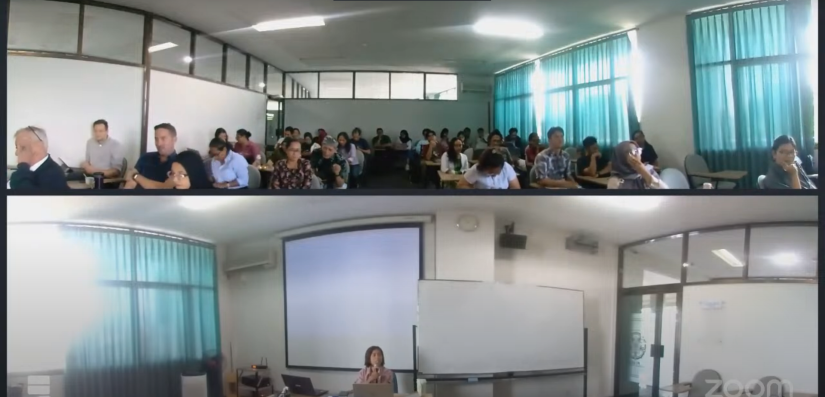

Beginning with a statement from an American news presenter that in Java, people seem to speak simultaneously in the languages of religion, mythology, and science. This statement raises questions about how these three aspects can coexist, which appears contradictory at first glance. Najiyah Martian, who earned her PhD in Religion and Nature from the University of Florida, argued that, “While coexistence may work from a mythological perspective, it does not hold when viewed from the perspectives of religion and science, particularly regarding differing views on nature.”
She made this statement during the Wednesday Forum organized by the Religious and Cross-cultural Studies (ALB) program, or the Center for Religious and Cross-cultural Studies (CRCS), at the Graduate School of Universitas Gadjah Mada (UGM) on October 16th in Classroom 306, UGM Graduate School Building. The Wednesday Forum serves as a regular discussion space held every Wednesday by the ALB Mater program and is open to the public.
In her presentation, Najiyah examined the relationship between several Muslim indigenous communities in Java and South Sulawesi with their environment, environmental ethics, and customary practices, and how these elements provide valuable insights into community interactions with their surroundings and the cultural diversity involved in understanding environmental management.
Najiyah also explored the dynamics of power, Islamic practices, gender relations, and the strategies they develop to preserve their traditions and customary values amid the pressures of modernity and the ongoing standardization of beliefs and Islamic practices in Indonesia. During the forum, participants engaged in discussions and posed questions regarding Najiyah’s findings.
In conclusion, Najiyah stated that Indonesia, as a large nation, has an important role in protecting nature. It is crucial to understand the interactions between religion, mythology, and science within the context of cultural diversity. This understanding will provide enlightenment and insight into the challenges faced by Indonesia’s indigenous communities.
Author: Asti Rahmaningrum
